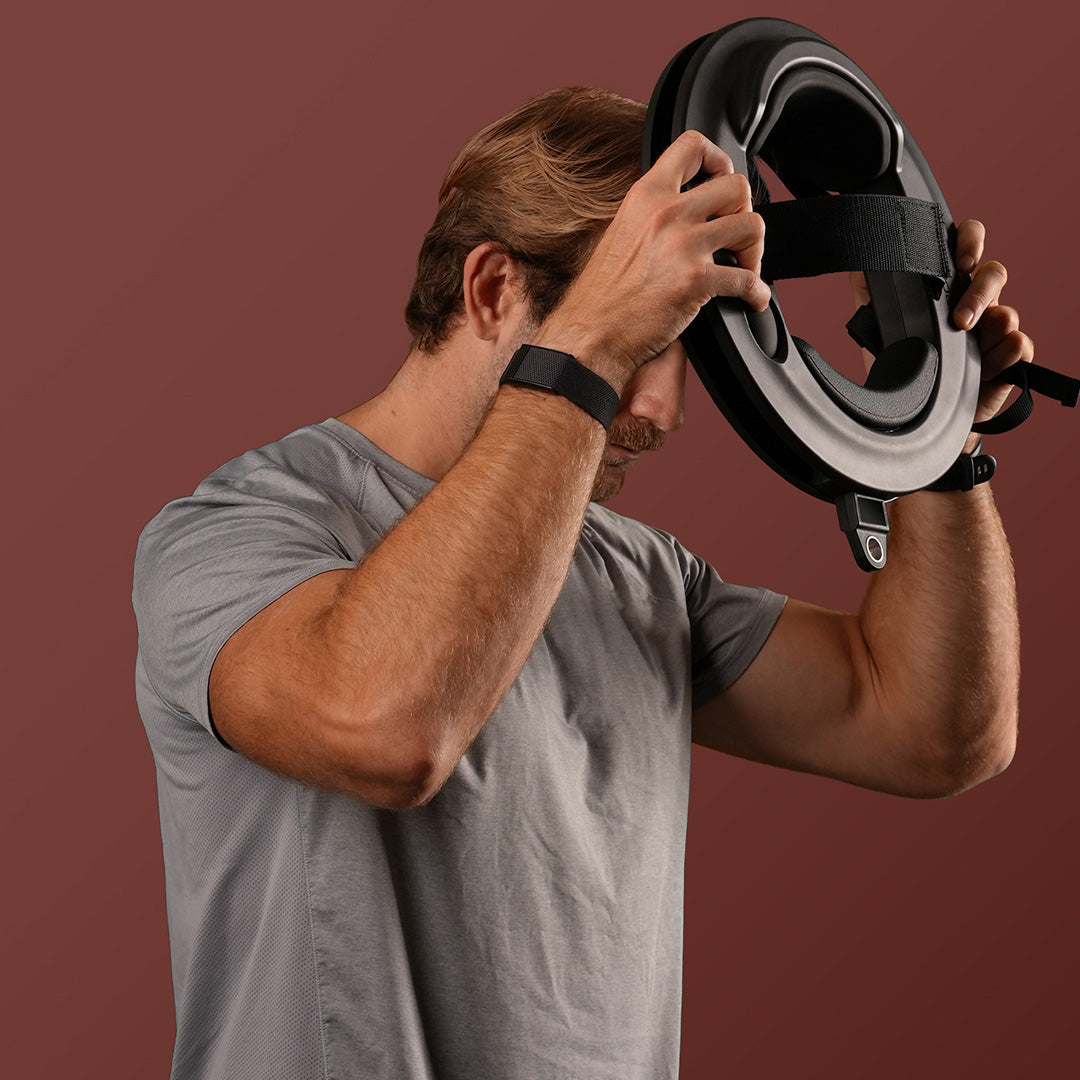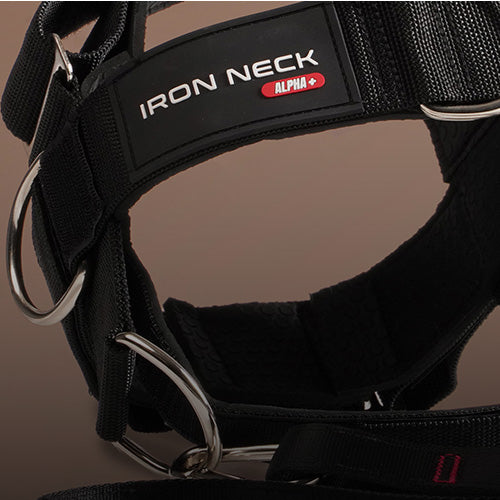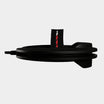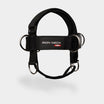Are you struggling with neck pain, tension, or stiffness due to neck scoliosis? It's a frustrating and often painful condition that can significantly affect your quality of life.
But what if we told you that there's a way to find relief, strengthen your neck, and improve your overall well-being through targeted neck exercises for scoliosis?
While scoliosis in the neck can cause discomfort, it doesn't mean you have to live with the pain forever. There are effective ways to manage it, and one of the most powerful tools at your disposal is movement. Motion is lotion, after all.
Incorporating specific neck scoliosis exercises into your routine can help reduce pain, enhance mobility, and even improve your posture. And by the time you finish reading this guide, you’ll be well on your way to freeing yourself from the shackles of living with scoliosis in the neck.
In this guide, we’ll help you regain control of your life and say goodbye to pain and immobility by sharing the best scoliosis neck exercises with Iron Neck. We’ll even guide you through creating a regimen to find lasting relief.
Before we get into that, we need to talk a bit about what neck scoliosis is in the first place.
A Brief Overview of Neck Scoliosis
Scoliosis is a term many people are familiar with, but when it comes to neck scoliosis, there might be some confusion. Let's clear that up and discuss what neck scoliosis is, how it can lead to neck pain, and the other symptoms it may cause that can affect your overall quality of life.
What is Neck Scoliosis?
Neck scoliosis, also known as cervical scoliosis, is a specific type of scoliosis that affects the upper part of the spine, known as the cervical spine. The cervical spine consists of the top seven vertebrae of your spinal column, starting from the base of your skull down to your upper back.
In a healthy spine, the cervical vertebrae form a gentle curve that allows for proper weight distribution and movement. In neck scoliosis, this curve is exaggerated or twisted, forming a C- or S-shaped curve. This abnormal curvature can result from various factors, including genetics, muscular imbalances, and other underlying medical conditions.
Does Scoliosis Cause Neck Pain?
Yes, scoliosis can cause neck pain, and it's not uncommon for individuals with neck scoliosis to experience discomfort. The abnormal curvature of the cervical spine can lead to uneven pressure on the vertebrae, discs, and surrounding tissues, causing pain and stiffness.
Moreover, neck scoliosis may cause the side neck muscles to become overworked while the other side becomes weak and underutilized.
This imbalance can contribute to tense neck muscles, neck spasms, and of course, pain. In some cases, the pain may also radiate to the shoulders, upper back, and arms.
Other Scoliosis Neck Symptoms: How it Affects Your Quality of Life
Beyond neck pain, neck scoliosis can lead to a range of other symptoms that can impact your daily life. These may include:
- Headaches: The tension and imbalance in the neck muscles can trigger tension headaches, making it difficult to focus and go about your daily activities.
- Reduced Range of Motion: The abnormal curvature can limit your neck's ability to move, making simple tasks like turning your head or looking up and down more challenging.
- Postural Changes: Neck scoliosis can cause your head to tilt to one side, shoulders to become uneven, or one shoulder blade to protrude more than the other. These postural changes can affect your self-esteem and overall body image. Don’t stress, though - we have a complete guide on how to fix neck posture.
- Fatigue: The constant tension and discomfort in your neck can lead to overall fatigue, making it hard to stay active and engaged in your daily life.
Understanding the symptoms and effects of neck scoliosis is essential in finding the right strategies to manage and alleviate your condition. As we move forward, we'll explore how targeted neck exercises can help you find relief and improve your quality of life.
Can Scoliosis Neck Exercises Help?
Scoliosis neck exercises can indeed provide relief and support for those dealing with neck scoliosis. Targeted exercises can help to address the imbalances in the neck muscles that can occur with neck scoliosis, and contribute to overall spinal health.
This is the same reason we recommend cervical vertigo exercises, exercises for neck arthritis, exercises for pinched nerves in the neck, etc. However, it's important to understand how the neck muscles are linked to scoliosis and how exercises can benefit those with this condition.
The Link Between Neck Muscles and Scoliosis
The muscles in the neck, or cervical region, play a crucial role in maintaining the stability and flexibility of the cervical spine.
When the spine curves abnormally due to scoliosis, the neck muscles on one side may become overstretched, while the opposite side becomes shorter and tighter.
This muscular imbalance can exacerbate the spinal curvature, lead to further pain and discomfort, and limit the range of motion.
Furthermore, the neck and shoulders are closely interconnected. When the cervical spine is misaligned, it can also impact the alignment of the shoulders and upper back, leading to postural imbalances throughout the upper body.
Addressing the muscle imbalances in the neck can have a positive effect on the entire upper body and contribute to improved posture and alignment.
Potential Benefits of Neck Exercises for Scoliosis
Neck exercises for scoliosis can offer a range of benefits for individuals dealing with neck scoliosis:
- Reduced Pain and Discomfort: Regular neck exercises can help to release tension in the neck muscles, reducing neck pain and stiffness. By strengthening and stretching the neck muscles, you can also improve their ability to support the cervical spine, leading to less pressure on the vertebrae and discs.
- Improved Range of Motion: Neck exercises can help to increase flexibility in the neck muscles, making it easier to turn your head, look up and down, and perform everyday movements without discomfort. We’ll share some neck mobility exercises specifically later on.
- Better Posture and Alignment: By addressing the muscle imbalances in the neck, you can improve your overall posture and alignment. This can have a positive impact on your appearance, self-esteem, and overall body function. We’ll also share some neck exercises for posture later on!
- Enhanced Quality of Life: Reducing pain, improving mobility, and achieving better posture can contribute to a higher quality of life. You may find it easier to stay active, engage in hobbies, and participate in social activities without being held back by neck pain and limitations.
It's important to note that while neck exercises can provide numerous benefits for individuals with neck scoliosis, they should be part of a comprehensive approach to managing the condition.
That being said, we’ll help you start off on the right foot by choosing the best neck exercises for scoliosis below.
The Top Neck Exercises for Scoliosis
Just as there are neck exercises for mass, neck fat exercises, or exercises for a saggy neck, there are movements that you should perform for neck scoliosis treatment specifically.
So, here are the top neck exercises for scoliosis - starting with the basics and moving towards more advanced neck scoliosis exercises.
Basic Neck Stretches
- Neck Tilts: Sit or stand with a straight posture. Slowly tilt your head to the left, bringing your ear towards your shoulder. Hold for 15-30 seconds, then repeat on the right side. Perform 2-3 sets on each side.
- Chin Tucks: Sit or stand with a straight posture. Tuck your chin towards your chest, keeping your back straight. Hold for 15-30 seconds and repeat for 2-3 sets.
- Neck Rotation Stretch: Sit or stand with a straight posture. Slowly turn your head to the left, looking over your shoulder. Hold for 15-30 seconds, then repeat on the right side. Perform 2-3 sets on each side.
These stretches can help release tension in the neck muscles, improve range of motion, and provide relief from discomfort. Eventually, though, you’ll want to progress to isometric neck exercises.
Isometric Neck Exercises
- Isometric Neck Flexion: Sit or stand with a straight posture. Place your hand on your forehead. Gently push your forehead against your hand without allowing your head to move forward. Hold for 5-10 seconds and repeat for 2-3 sets.
- Isometric Neck Extension: Sit or stand with a straight posture. Place your hand on the back of your head. Gently push your head against your hand without allowing your head to move backward. Hold for 5-10 seconds and repeat for 2-3 sets.
- Isometric Neck Lateral Resistance: Sit or stand with a straight posture. Place your right hand on the right side of your head. Gently push your head against your hand without allowing your head to move to the side. Hold for 5-10 seconds and repeat on the left side. Perform 2-3 sets on each side.
Isometric exercises help strengthen the neck muscles without putting excess strain on the cervical spine. Once you have a solid grasp on these, it’s time to start performing some more advanced movements with the best neck exercise equipment available: The Iron Neck.
Advanced Neck Exercises with Iron Neck
- 360 Spin: Using the Iron Neck device, perform controlled spins, slowly rotating your head in a full circle. The resistance provided by the device helps build strength and stability in the neck muscles. Perform 2-3 sets of 5-10 rotations in each direction.
- Look Left & Look Right: With the Iron Neck device on, turn your head to the left and then to the right against the resistance. This exercise helps strengthen the muscles responsible for neck rotation. Perform 2-3 sets of 10-15 repetitions in each direction.
- Locked Neck Body Turns: Keep your head facing forward and rotate your entire upper body to the left and right against the resistance of the Iron Neck device. This exercise challenges the neck stabilizers. Perform 2-3 sets of 10-15 repetitions in each direction.
Iron Neck provides a unique and advanced way to train your neck muscles, making it an excellent choice for those seeking effective and efficient exercises to manage neck scoliosis.
The device allows for progression options, enabling you to increase resistance as you gain strength and confidence in your neck training. We’ll talk more about what a profound role it can play in your neck scoliosis treatment regimen below.
How to Create an Effective Routine With Neck Scoliosis Exercises
Our complete guide on neck training is worth a read before you get started performing these neck scoliosis exercises, as you’ll want to think carefully about training frequency, exercise selection, progression, and recovery.
We’ll cover the basics of how to exercise your neck muscles below, though - starting with why you should invest in our neck machine workout device.
Investing in Your Neck Scoliosis Treatment With Iron Neck
While traditional neck exercises can be helpful, investing in specialized equipment like the Iron Neck can significantly enhance your training regimen.
The Iron Neck offers adjustable resistance, allowing you to progress at your own pace. Its innovative design also enables a full range of neck motion exercises that target the specific muscles affected by neck scoliosis.
If nothing else, you need a neck workout harness so you can adjust resistance over time. Otherwise, your training will become stagnant. Speaking of which, let’s talk about setting your neck training before and after goals.
Setting Realistic Goals
It's essential to set realistic and achievable goals for your neck scoliosis exercise routine. Whether your goal is to reduce pain, improve flexibility, or strengthen your neck muscles, breaking it down into smaller, measurable milestones will help you stay motivated and track your progress.
Balancing Strength and Mobility
While developing a strong neck is crucial to overcome the pain of scoliosis in the neck, so too is neck flexibility and mobility.
Strength exercises like isometric neck exercises and Iron Neck workouts can help build muscle support around your cervical spine, while mobility exercises like basic neck stretches can improve flexibility and reduce muscle stiffness.
Progressing Your Exercises Over Time
As you become more comfortable with your neck exercises, it's essential to progressively increase the intensity and complexity of your workouts. This is known as progressive overload, and it’s the foundation of any neck workout at home.
Gradually increase the resistance on your Iron Neck, or add more repetitions to your strength exercises. This progression will help you continue to see improvements in your neck scoliosis symptoms.
Incorporating Rest and Recovery
Rest and recovery are crucial components of any exercise routine, including neck exercises for scoliosis.
Overworking your neck muscles can lead to fatigue and strain, which may exacerbate your scoliosis symptoms. Be sure to schedule rest days in your routine, and consider incorporating gentle stretches or relaxation exercises to aid in recovery.
More Tips on Living With Scoliosis in the Neck: Treatment and Lifestyle Changes
While neck scoliosis exercises play a pivotal role in your road to recovery, here are a few other ways to find relief and live a happier, more comfortable life:
Closing Thoughts on Neck Exercises for Scoliosis
In conclusion, neck scoliosis can be a challenging condition to live with, but there are various neck scoliosis exercises and lifestyle changes that can help manage your symptoms.
Implementing proper posture, staying active, eating a balanced diet, and seeking professional guidance are all essential components of living well with neck scoliosis.
If you're serious about treating your condition through scoliosis neck exercises, invest in the Iron Neck. It provides an innovative, effective, and versatile way to get strong, thick neck muscles and enhance mobility.
Embrace a healthier, pain-free life by getting your Iron Neck today and taking control of your neck scoliosis. Your comfort and happiness are worth it!











